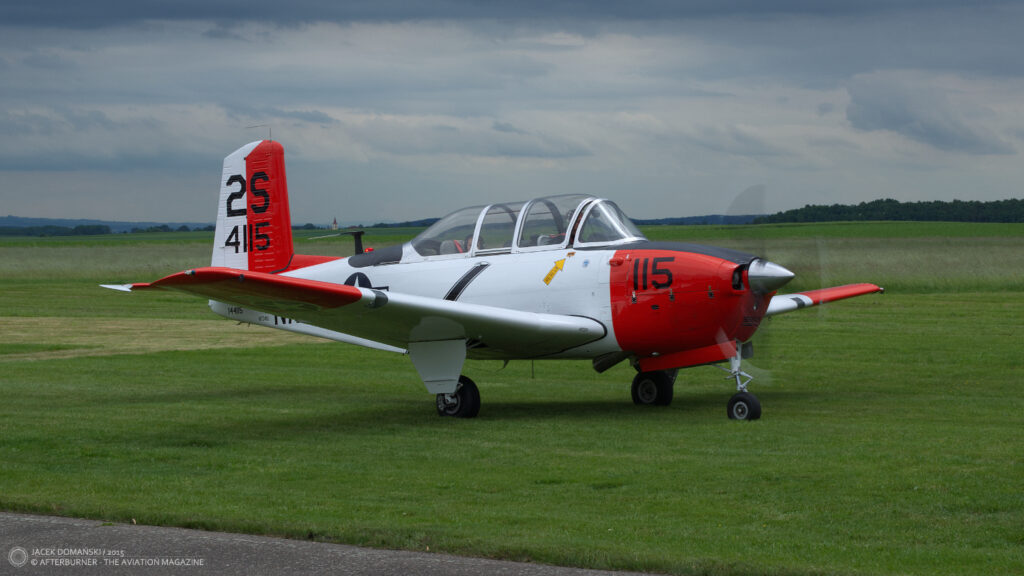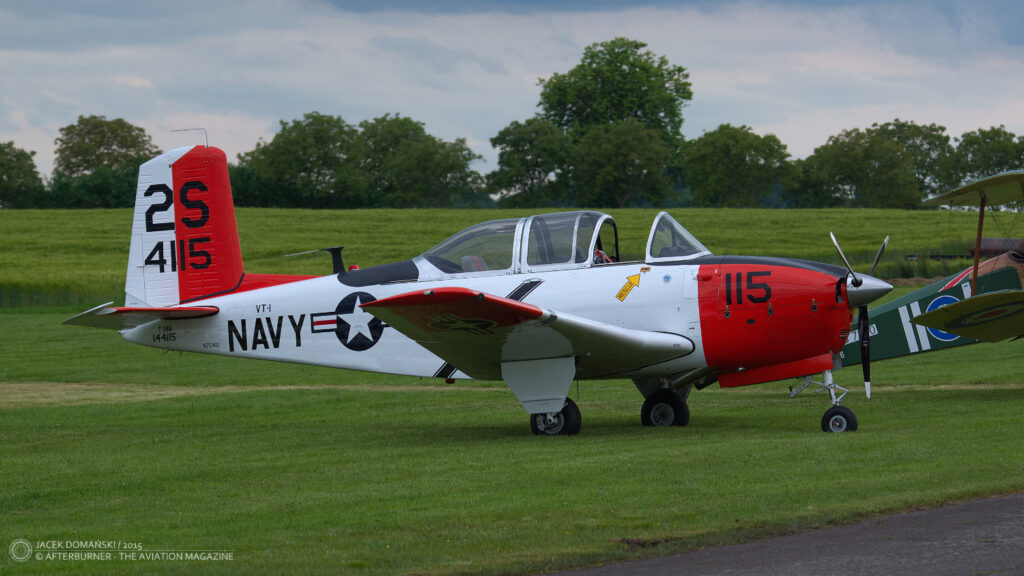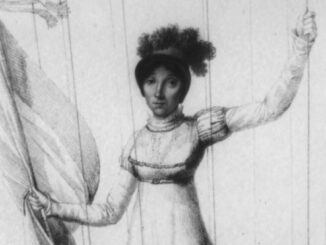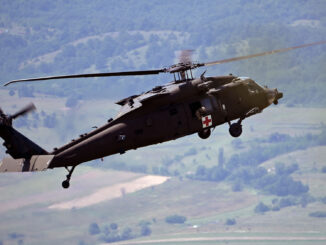 On 2nd December 1948, Beechcraft T-34 Mentor military training aircraft performed its first flight, flown by company test pilot, Vern Carstens.
On 2nd December 1948, Beechcraft T-34 Mentor military training aircraft performed its first flight, flown by company test pilot, Vern Carstens.
In 1947, Beech Aircraft Corporation based in Wichita, Kansas, brought to market its new aeroplane – Model 35, commonly known as Bonanza. The aircraft, developed by team of designers led by Ralph Harmon, quickly became extremely popular and revolutionized the world of general aviation.
Nevertheless, for Walter Beech – an American aviation entrepreneur and founder of Beech Aircraft Corporation – it was not enough, as he also hoped to enter the market of military training aeroplanes. Not discouraged by the fact that, at the time, the US armed forces were neither looking for any new training aircraft nor had any budget intended for that purpose, Beech began to develop the aeroplane as his private venture. At his own expenses and his own risk.
Initially, three conceptual projects were made, all based on the Bonanza and featuring its famous V-tail. However, Beech quickly realized that what attracted civilian customers could be too bizarre for military conservatives and finally, the new trainer received classic tail section.
The aircraft, designated Model 45, featured a narrower, two-seat cockpit. Its fuselage and wings were redeveloped to withstand higher Gs and advanced aerobatics. On 2nd December 1948, the Model 45 performed its maiden flight, powered by Continental E-185 engine, the same as then used in the Bonanza, generating 185 hp.
Yet when the Model 45 was under further development, the Beech company attempted to arouse interest of the US military authorities. The aeroplane was advertised as more cost-effective alternative to AT-6 Texan, however without any significant success. At that time, the US armed forces had already chosen the successor for the Texan fleet – in 1948, a conceptual design of North American XT-28 was approved, and two prototypes were ordered. The aircraft entered service in the mid-1950, receiving an official designation T-28 Trojan.

However, the situation changed in 1950, with increasing tensions between the superpowers and then outbreak of the Korean War. For the American combat aviation, the Air Training Command (ATC) acted as a bottleneck, not copying with the increasing demand for the military pilots. In order to solve that issue and accelerate the training process, the ATC has decided to reform the existing course by splitting it into primary and basic phases.
As a direct consequence, in the same year of 1950, a competition for a new primary trainer was launched. For the purpose of that contest, the US Air Force ordered three prototypes of the new Beech trainer, giving them the military designation YT-34. Evaluation flights and other tests – during which the YT-34 had to compete with two other designs, Fairchild YT-31 and Temco YT-35 – lasted until 1953.
Finally, in the early 1953 the Beech trainer was chosen by the USAF, officially designated T-34A Mentor. A year later, the first production aircraft were received by training units and the aeroplane began its operational service. In 1955, the US Navy followed, ordering a dedicated variant of the trainer, known as T-34B.
Nevertheless, the USAF considered introduction of both T-28 and T-34 as a temporary solution. In 1952, the ATC issued a requirement called Trainer Experimental (TX), that specified a future primary trainer as a lightweight, jet-powered training aircraft with two ejection seats. That programme concluded with creation of Cessna T-37 Tweet that entered service in the late 1950s. The T-34As were retired from the USAF official training course and transferred to military aero clubs and overseas air bases. There, they remained in active service until the late 1960s.
The T-34B variant used by the US Navy marked a significantly longer operational record. The Mentors were being actively used by Naval Air Training Command until the mid-1970s and then transferred to Navy Recruiting Command. The last T-34Bs were retired from the Navy in the early 1990s.

In 1955, the Beech company launched another private venture development. This time it was a jet-powered variant of the T-34, designated Model 73 Jet Mentor. The aeroplane was built in only one example and performed its maiden flight on 18th December 1955. The Jet Mentor was evaluated by the USAF and the US Navy, but the aforementioned Cessna T-37 was chosen as a primary trainer for the air force, while the Navy decided to stay with the propeller-driven trainer.
Another version of the T-34 Mentor was developed in 1973. It was the T-34C Turbo-Mentor, powered by Pratt & Whitney Canada PT6A-25 turboprop engine. The aeroplane was then approved for serial manufacturing that began in 1975. The Turbo-Mentor was acquired by the US Navy and by some foreign customers, its production was concluded in 1990.
Apart from its main purpose of the primary training aircraft, the T-34 Mentor was used as a search aircraft by the Civil Air Patrol, as well as test bed aircraft for the US Navy, US Army and NASA. The aeroplane was also being used by air forces or naval aviation of approximately twenty countries, including the T-34C-1 armed variant, featuring four hardpoints under the wings. After retirement from their military service, several Beech T-34 Mentor aircraft entered the civilian market and nowadays are in hands of private owners all over the world.
The T-34B presented in this article is exactly one of such examples. The aeroplane was manufactured in 1957 (c/n BG-422) and was operated by the US Navy until 1970. Then, it spent several years at Military Aircraft Storage and Disposition Center, and finally was sold to its first private owner in 1994. The aeroplane was registered N7041U, being operated in the United States until 2011, when it found its new home in the Czech Republic.




